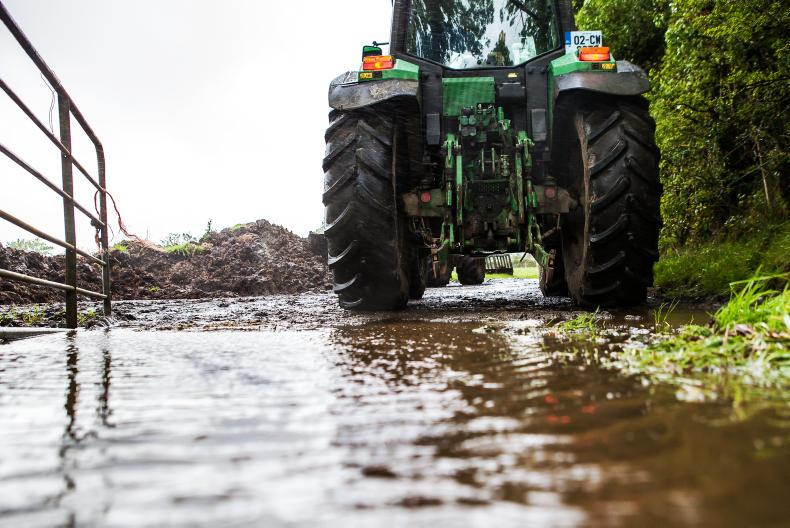Grass dry matters are low, cows are unhappy with their lot and milk yields are dropping.
Going in with 2kg or 3kg of meal per cow for two or three days during really wet weather is no harm, as it helps to keep dry matter intakes up, particularly when grass dry matter is low.
Low grass dry matter makes it harder for cows to get their fill.
Cows should be put back to 12-hour breaks. Leaving them on longer breaks of 24 or 36 hours is fine if land is dry and weather is good, but when land is sticky and weather is wet, then it is nearly impossible to get a good clean-out, as too much grass is soiled or walked into the ground. Back-fencing is another necessity.
With the days warm and clammy, growth rates continue to be excellent, so regrowth is very fast. These regrowths are so important – they must be protected.
All the grass plant’s energy reserves go into sending up that shoot. If it is grazed or nipped off by a cow, the grass plant will struggle big-time.
This is because it needs leaf area for photosynthesis to happen to replenish the energy reserves in the crown and roots.
Allowing cows to nip off those shoots kills tillers and severely hampers regrowth.
Lameness
Roadways are getting wet and sticky earlier than most farmers imagined. This increases the chances of lameness. Examine your own roads for signs of decay and set aside some money for maintenance and upgrade of poor patches.
The quality of the road surface has a huge impact on whether cows will pick up lameness.
On too many farm roadways I visit, there are loose and sharp stones everywhere. Imagine walking on them barefoot.
Wet roads are harder on cows because wet hooves are softer and a lot of the binding material that cushions the sharp stones in dry weather disappears in wet weather.
Read more
Wettest August day in 62 years
10 steps to help manage cattle and land damage in wet weather
Grass dry matters are low, cows are unhappy with their lot and milk yields are dropping.
Going in with 2kg or 3kg of meal per cow for two or three days during really wet weather is no harm, as it helps to keep dry matter intakes up, particularly when grass dry matter is low.
Low grass dry matter makes it harder for cows to get their fill.
Cows should be put back to 12-hour breaks. Leaving them on longer breaks of 24 or 36 hours is fine if land is dry and weather is good, but when land is sticky and weather is wet, then it is nearly impossible to get a good clean-out, as too much grass is soiled or walked into the ground. Back-fencing is another necessity.
With the days warm and clammy, growth rates continue to be excellent, so regrowth is very fast. These regrowths are so important – they must be protected.
All the grass plant’s energy reserves go into sending up that shoot. If it is grazed or nipped off by a cow, the grass plant will struggle big-time.
This is because it needs leaf area for photosynthesis to happen to replenish the energy reserves in the crown and roots.
Allowing cows to nip off those shoots kills tillers and severely hampers regrowth.
Lameness
Roadways are getting wet and sticky earlier than most farmers imagined. This increases the chances of lameness. Examine your own roads for signs of decay and set aside some money for maintenance and upgrade of poor patches.
The quality of the road surface has a huge impact on whether cows will pick up lameness.
On too many farm roadways I visit, there are loose and sharp stones everywhere. Imagine walking on them barefoot.
Wet roads are harder on cows because wet hooves are softer and a lot of the binding material that cushions the sharp stones in dry weather disappears in wet weather.
Read more
Wettest August day in 62 years
10 steps to help manage cattle and land damage in wet weather






 This is a subscriber-only article
This is a subscriber-only article










SHARING OPTIONS: